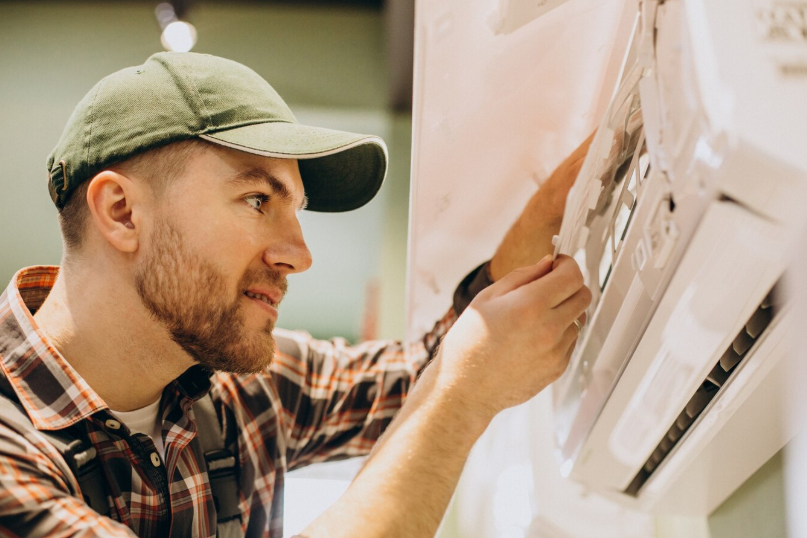A Complete Guide to AC Installation and HVAC Systems

When it comes to home comfort, few systems play as crucial a role as your HVAC system. HVAC—short for heating, ventilation, and air conditioning—is responsible for maintaining indoor air quality and regulating temperature. A critical component of any HVAC system, especially during the sweltering summer months, is the air conditioning unit. Whether you're upgrading your current setup or building a new home, understanding the ins and outs of AC installation and your HVAC system can save you time, money, and stress.
Understanding the HVAC System
Before diving into AC installation, it’s important to understand what an HVAC system is and how it works. An HVAC system is an integrated solution for heating, cooling, and ventilation. It consists of several parts:
Furnace or Heat Pump: Provides heating for the space.
Air Conditioner: Removes heat and humidity from the air during summer months.
Ductwork: A network of tubes that distributes conditioned air throughout the home.
Thermostat: Controls the temperature settings and schedules.
Air Handler: Circulates the conditioned air through the home.
Filters and Vents: Improve indoor air quality and airflow.
Modern HVAC systems are designed to be energy-efficient, environmentally friendly, and easy to maintain. Proper installation and maintenance can ensure the system runs smoothly and provides comfort for years.
Why Professional AC Installation Matters
Air conditioning installation is not a DIY project. It requires technical knowledge, experience, and proper tools. Hiring a licensed HVAC technician ensures your AC installation meets safety standards, manufacturer requirements, and local building codes. Improper installation can lead to several problems, including:
Reduced energy efficiency
Frequent system breakdowns
Shortened system lifespan
Poor indoor air quality
Increased utility bills
Steps Involved in AC Installation
AC installation is a detailed process that should be customized based on the size of your home, existing HVAC infrastructure, and your specific cooling needs. Here’s a general overview of the steps involved:
Load Calculation
Before selecting an air conditioner, a professional will conduct a Manual J load calculation. This calculates the cooling and heating needs of your home based on factors such as:
Square footage
Number of windows and doors
Insulation levels
Sunlight exposure
Number of occupants
Internal heat-generating appliances
This ensures the chosen AC unit has the right capacity to cool your home effectively without wasting energy.
Selecting the Right AC Unit
Based on the load calculation, the technician will recommend a suitable air conditioning unit. Some popular types include:
Central Air Conditioners: Ideal for large homes with existing ductwork.
Ductless Mini-Splits: Great for homes without ducts or for cooling individual rooms.
Window Units: Economical and ideal for small spaces.
Portable ACs: Flexible and easy to install, though less efficient for long-term use.
SEER (Seasonal Energy Efficiency Ratio) ratings are also considered. The higher the SEER rating, the more efficient the unit.
Preparing the Installation Site
Once the AC unit is selected, the site is prepared. For central ACs, this might involve checking the existing ductwork for leaks or damage. For ductless systems, it includes selecting an ideal wall or ceiling location for the indoor unit and an outside space for the condenser.
Installing the Unit
The installation includes mounting the indoor and outdoor units, connecting refrigerant lines, installing the condensate drain line, and wiring the thermostat. For central systems, the installer will connect the unit to the existing ductwork and make sure the airflow is balanced.
Testing the System
Once installed, the system is tested to ensure it’s operating correctly. The technician checks refrigerant levels, airflow, and thermostat settings. They will also make sure the system is cooling evenly throughout the space and explain how to use and maintain it.
Benefits of a New HVAC System
Investing in a new HVAC system or upgrading your existing one has many benefits:
Energy Efficiency: New systems consume less energy, reducing utility bills.
Improved Air Quality: Modern systems have advanced filtration and humidity control features.
Smart Technology Integration: Many new HVAC systems are compatible with smart thermostats and home automation systems.
Reduced Carbon Footprint: Energy-efficient systems are more environmentally friendly.
Higher Property Value: Homes with new HVAC systems are more appealing to buyers.
Maintenance Tips for Your HVAC System
Proper maintenance is essential to ensure your HVAC system performs efficiently year-round. Here are a few key maintenance tips:
Change Filters Regularly: Replace air filters every 1-3 months to maintain airflow and air quality.
Schedule Seasonal Tune-ups: Have a professional inspect and service your HVAC system in the spring and fall.
Check for Leaks and Blockages: Inspect ductwork and vents for any blockages or leaks.
Keep the Area Around Units Clear: Ensure nothing obstructs the airflow around your outdoor condenser or indoor units.
Monitor Your Thermostat: Use programmable thermostats to manage temperature efficiently and reduce strain on the system.
Signs You May Need a New AC Installation
If your air conditioner is more than 10-15 years old, it may be time to consider a replacement. Look out for these signs:
Rising energy bills despite normal usage
Uneven cooling or hot spots in the home
Frequent repairs or breakdowns
Strange noises or odors from the unit
Poor humidity control or excessive dust
Replacing an outdated AC unit with a new one can significantly enhance comfort and reduce operational costs.
Final Thoughts
AC installation and a properly functioning HVAC system are essential for maintaining indoor comfort and air quality throughout the year. Whether you’re installing a new system or upgrading an old one, working with a qualified HVAC professional ensures a smooth, efficient, and reliable setup. With the right equipment, careful planning, and routine maintenance, you’ll enjoy cool summers, warm winters, and a healthier home environment.
- Art
- Causes
- Crafts
- Dance
- Drinks
- Film
- Fitness
- Food
- Games
- Gardening
- Health
- Home
- Literature
- Music
- Networking
- Other
- Party
- Religion
- Shopping
- Sports
- Theater
- Wellness



